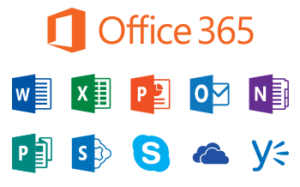Cloud Computing
For small businesses having a big expensive on-premise server may not make financial sense. On-premise servers require regular maintenance and infrastructure to access and support it. Cloud computing just requires an Internet connection. We recommend a unified product like Office 365, which utilizes One Drive and SharePoint to access documents and files in the cloud. Alternately Google has its own similar platform using a Gmail style email and Google Drive. You may also use Dropbox to achieve this.
Cloud computing allows you to work from any location, anywhere in the world with just an Internet connection.
Cloud computing allows you to work from any location, anywhere in the world with just an Internet connection.


Why move to the cloud?
At this point, it’s clear that the advantages outweigh the limitations. Most companies today aren’t considering whether they should migrate to the cloud but what they should migrate.
The cloud delivers more flexibility and reliability, increased performance and efficiency, and helps to lower IT costs. It also improves innovation, allowing organizations to achieve faster time to market and incorporate AI and machine learning use cases into their strategies. These primary benefits can also translate into other related benefits that can help to boost productivity, support remote workforces, and improve operational efficiency.
Plus, it’s important to remember that embarking on your own cloud journey isn’t necessarily an all-or-nothing scenario. For example, many businesses are finding that adopting a hybrid approach can help extend the capacity and capabilities of existing infrastructure while still operating in the environment that works best for the overall business.
The cloud delivers more flexibility and reliability, increased performance and efficiency, and helps to lower IT costs. It also improves innovation, allowing organizations to achieve faster time to market and incorporate AI and machine learning use cases into their strategies. These primary benefits can also translate into other related benefits that can help to boost productivity, support remote workforces, and improve operational efficiency.
Plus, it’s important to remember that embarking on your own cloud journey isn’t necessarily an all-or-nothing scenario. For example, many businesses are finding that adopting a hybrid approach can help extend the capacity and capabilities of existing infrastructure while still operating in the environment that works best for the overall business.
Are you ready to untether yourself from a server?






